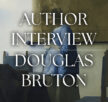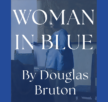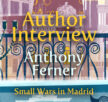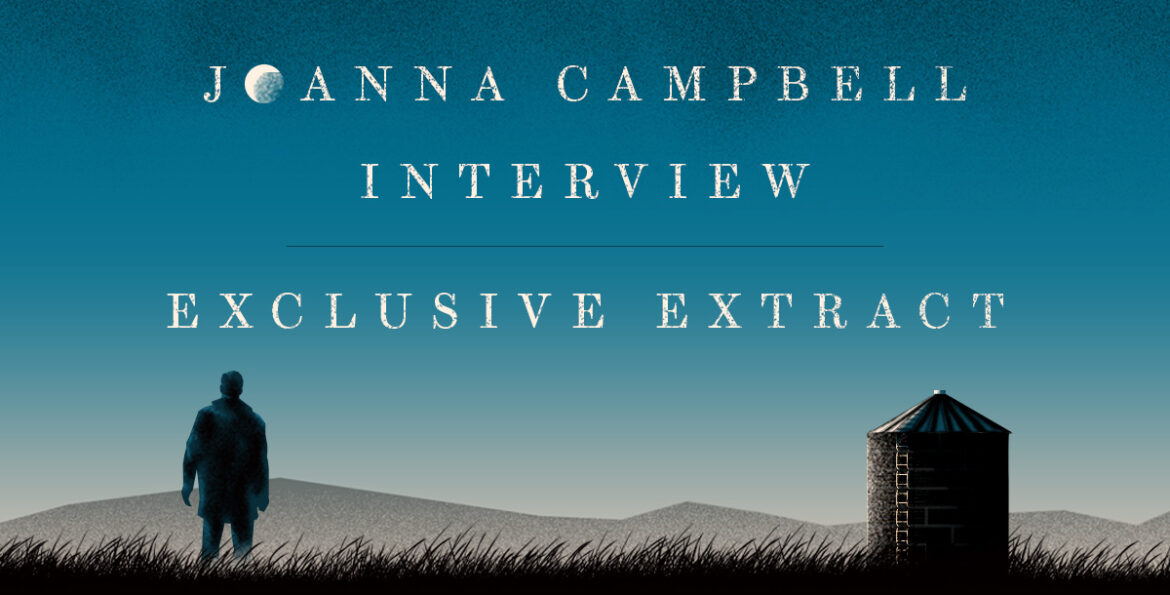

Joanna Campbell interview and exclusive extract
- 23rd August 2022
- Category : Author,Blog,Interviews & Blogs
Joanna Campbell is the author of Instructions for the Working Day, a pacy novel focused on betrayal and freedom, publishing on 31 August 2022. Neil Fischer has inherited a village – his father’s former hometown of Marschwald in East Germany, left to deteriorate for decades after the fall of the Berlin Wall. Neil is determined to restore the village to its former glory, but is met with hostility, mistrust and underlying menace. As tensions rise and truths emerge, all signs point to danger. Read this interview with Joanna Campbell to find out more, and to see an exclusive sneak peek of Instructions for the Working Day.
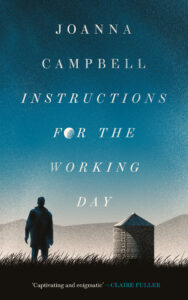
How did you start writing and what does writing mean to you?
For English lessons in primary school, we had to produce a piece of creative writing almost every week. It was by far my favourite task and it was exciting if I was chosen to read my stories to the class. I always tried to make them funny, because I loved it when everyone laughed. I was a painfully shy child, but lost all inhibitions when I stood up to read. It made me feel, for a few minutes, as if I were one of the popular children. In adulthood too, writing is still my favourite way to entertain people. If someone tells me they were moved by one of my stories, or it made them smile, it feels as if I’m back in those English lessons again.
Did you always want to be a writer?
Always. I can’t remember a time when I didn’t live in a world of my own, inventing characters and making up stories in my head. A maths teacher once told my parents that I didn’t ever respond when she asked me a direct question, even though I was looking straight at her. It seemed to her as if I weren’t actually there. She was right. I was physically present, pretending to be attentive, but mentally worlds away.
If you could describe Instructions for the Working Day in one word, what would it be?
Haunting.
What inspired you to write Instructions for the Working Day?
I love to write about ordinary people pushed to the side-lines of life, battling to find a way to belong, or escape. And to begin their story at the point where they believe they may have found the way in, or the way out.
Instructions for the Working Day is written from the perspectives of Neil and Silke. Why did you choose to tell the story through these characters, and did you have a favourite character to write?
Like the abandoned village which is the novel’s setting, Neil and Silke are also trapped in the ruins of the past. Neil endured a troubled childhood and is also haunted by a horrific incident during his adolescence, while Silke’s suffering stems from the historical upheaval in Germany. Psychological abuse has almost crushed both characters, but when the novel begins, they are each on the verge of emerging from the wreckage. I really enjoyed writing about two characters who have so much in common, yet search for a better future in contrasting ways.
My favourite character to write was Neil, because I enjoy writing from the male viewpoint. I’m interested in imagining how it might feel to be a man and always prefer writing about someone who is nothing like me.
Was there a particular part of the story that you found difficult to write?
I found it emotionally challenging to write about Neil’s father, particularly his cold and calculating attitude towards his son. He shocked me time and time again.
Instructions for the Working Day is set in a deteriorating village in East Germany – was the village of Marschwald inspired by anywhere in particular?
It was inspired by Alwine, a decaying village with a handful of residents, in marshy countryside to the south of Berlin. I stumbled across an article about it in the Berliner Zeitung and felt a sense of utter abandonment from which the characters for Instructions for the Working Day immediately emerged.
The article explained that Alwine had been put up for sale at auction. After German reunification, people in the east, particularly the younger generation, travelled west for a new life. The coal briquette factory in Alwine closed down and became a museum, as did the village, in that it was suspended in time, in the final days of the East German regime. But it received no visitors.
After a purchase was made, old baths and toilets were ripped out of uninhabitable dwellings and building materials arrived, but little progress was made. Investors have ambitious ideas for renovation, but not for the tumbledown houses. Instead they foresee a modern community of inventors creating ideas for experimental lifestyles and methods of tackling climate change.
Although this might be Alwine’s only chance of survival, the stalwart residents remain uneasy about their future.
Your previous novel, Tying Down the Lion, was also set in Germany during the Cold War. What draws you to writing about this region and time period?
My interest in the Cold War and life in a communist state began at university in the 1970s. I studied German and my favourite module was East German literature and culture. I spent my third year teaching English in West Germany and was affected by the psyche of the people I met, particularly the other tenants in my lodgings, most of them devastated by separation from loved ones in the east.
Earlier, when I was studying for A Levels, I went on a school trip to West Germany. Our student counterparts accompanied us on excursions, one of which took a pause to view the barbed-wire border between east and west. While we climbed out of the coach and absorbed the unsettling atmosphere, our German friends stayed in their seats. It was too sad, they said. They waited graciously for the excursion to continue, after which we were all subdued for some time. I didn’t know very much about the Cold War then, but the repressed emotion of that afternoon remained.
What’s your favourite book and who is your favourite author?
I have several favourite books, so might answer this question differently another day. This time I’ve chosen The Children of Dynmouth by William Trevor. It has a deeply flawed—even obnoxious—main character, yet thanks to the brilliance of William Trevor’s writing, somehow, every time I re-read it, I find myself rooting for lonely, neglected Timothy Gedge.
Do you have a writer’s habit that helps you ‘get in the zone’?
I re-read the previous day’s writing to ensure I’m still following the main path of the story. Too many digressions into sub-plots or too much interior monologue can interrupt the flow and rhythm. If I’ve strayed too far, I delete those sections and feel the prose firming up, which is a gratifying way to start the day. And I always check my list of small details, or motifs, that thread through the novel and add texture to the prose. I bear them in mind as I continue writing to ensure continuity, while also taking care not to overuse them.
Do you have a writing schedule?
I try to write as much as possible throughout the day, but the morning is the best time for me. The earlier I start, the smoother it flows. I never set goals, such as daily or weekly word counts. I edit all the time until I’m satisfied with every sentence before I move on. Which is not to say I’m still satisfied when I read it back the next day.
Where do you tend to write?
I have a tiny table by a draughty window and a hard, uncomfortable chair. I sit with my shoulders hunched and my legs wound round each other. I write better if I’m not relaxed, but it’s not an attractive sight.
What do you hope people take away from reading your book?
I hope the story will captivate readers and that they will continue to think about Neil and Silke afterwards. I hope it is emotionally engaging and that some parts make people smile. Most of all, I would like it to be a memorable book.
What’s a piece of advice you can give to aspiring authors?
Try not to place your characters on a pedestal. Don’t be in so in awe of them that you avoid making them suffer. If you tread too carefully, tip-toeing around the potential for conflict, or resolving their problems too quickly, your narrative could lose vital tension.
*
Keep reading for a sneak peek of Instructions for the Working Day…
Neil Fischer drives with his window down, the warm air lifting the hairs on his arms. Dust blows in, making his eyes water. The sun shimmers on the tarmac, softening it enough to melt. His car could sink without anyone noticing.
The last time he was on this road, his father was driving. Neil was twelve. He sat in the back seat with his little sister, Kersten. Their mother sat in the front, wearing a pink straw hat. The moment she wound her window down, it was whipped away. Neil watched it cartwheeling out of sight.
A girl in a white T-shirt and jeans wide enough to waft in the breeze is standing by the roadside, holding her thumb out. Neil has never picked anyone up before. When he slows down, the car feels even warmer.
It was about here, shortly after his mother lost her hat, that his father spotted an agitated man wanting a lift. He pulled up and told Neil’s mother to squeeze into the back with the children. The man bounced about in the front seat, shot it backwards into Neil’s knees and unfolded a ventriloquist’s dummy from his holdall. Kersten crawled onto their mother’s lap. The man twisted round and made the dummy say thank you. It had a varnished face with startled eyes and only spoke German. It talked for the entire hour the man was in the car. Neil thought it might be telling jokes, because his father kept laughing. Their mother cried into his sister’s hair.
Neil’s father changed their plans. He decided they would spend the night at a guesthouse the dummy had recommended. It was beside a small lake with an artificial beach. Neil imagined plastic shells and wondered if Kersten would be allowed to pick them up for her collection. They might be glued in place, or perhaps you would have to pay. His mother clutched her handbag and stared ahead, letting her eyes brim over, as if she wanted everything to blur and soften.
The guesthouse was expensive. They had to share a room with two single beds. His father made them lie down in different combinations. The best fit was for Kersten to sleep with him, Neil with his mother. In the restaurant, the fresh trout was out of the question because it cost too much. They had to order small bowls of chips and cucumber salad. Kersten let the white dressing drip off her spoon onto the tablecloth. Their father frowned. Beneath the table he rapped her knee with the spoon, while their mother dabbed the stain with her serviette.
When the fruit salad arrived, their father managed to smile. He recalled the years when oranges and bananas were hard to come by in East Germany. Fruit was still a treat for him, he said three times. Neil’s mother said he should help himself to as much as he liked. They were all too full of chips, she told him. Neil would have liked a few cherries, but he did not mention it. Kersten gripped the tablecloth draping over her lap. She bunched it in her hands. Her eyelashes were wet. She looked up when their father said they would be going to the beach straight away.
‘But it’s the evening,’ their mother said.
‘Indeed it is. How observant of you.’
Back in the room, Neil’s mother unpacked their towels. She said it would take a minute to find everyone’s swimming costumes. She pointed out that both Kersten and Neil were yawning.
‘This place is for families,’ Neil’s father told her. ‘There are children younger than four out there. And what big boy of twelve needs his bed at eight o’clock?’
They were all going to stay up for sunset, for the mauve and apricot sky. They must hurry. The little beach was filling up. They would not need swimming costumes anyway. Everyone here was naked.
*
Instructions for the Working Day is publishing 31 August 2022. Pre-order now from Blackwell’s and Waterstones.


